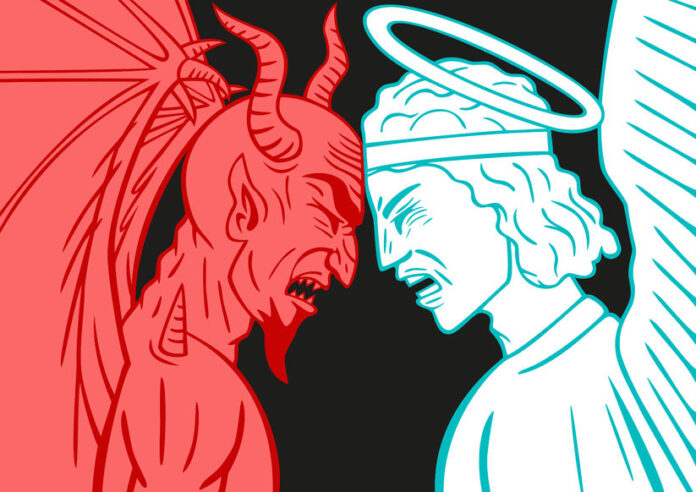The Silver Thread: Speaking with Satan
By Dr. Michael Abramsky
Satan is a Hebrew word which means “the adversary”. In the Old Testament (The Torah) Satan is only mentioned three times. In each case Satan is a figure sent by God to prevent a character from committing transgressions. Satan is, therefore, God’s emissary to prevent people from harm or from thwarting God’s wishes.
It is in the Book of Job where the figure of Satan takes a different form. Satan appears as a separate embodiment who urges God to destroy Job by taking his family and his possessions, so that “he will curse you”. He argues that Job’s faith in God is contingent upon God treating him well, and that in the presence of suffering Job will desert God. In this story Satan is the character who challenges man’s faith, who tempts him away from his loyalty to God.
The Book of Job was written much later in Jewish history and likely refers Persian influences. The Persians had two equal and opposing Gods who vied for control of the universe: Ahura Mazda (illuminating wisdom) and Angra Mainyu (destructive spirit). This dualistic conception of God likely bled into Jewish culture after Israel was conquered by the Persians. Under this dualism God developed a powerful adversary, and their battle was a constant.
In traditional Judaism “God is One”; Jews believe that there is only God and then there is everything else. Through the cross pollination of cultures that occurred between the Hebrew nations, Persia, Egypt, Assyria and Babylonia, a rival version of God occurred. This God was dualistic – God is Two-bifurcated into the all good and the all evil, in constant warfare.
This new Satan appeared in manifest form in the Gospel of Matthew, where Jesus is tempted by the devil. Like the Book of Job, Satan becomes an embodied character. He tries to seduce through earthly temptations, appealing to man’s sense of lust, greed, and anger. The manifest conflict is the search for spirituality which is compromised by man’s earthly seducers, his own desires.
In Buddhism the conflict becomes more explicitly psychological. After pursuing various paths to enlightenment, Siddhartha Gautama, the future Buddha, sits under the Bodhi Tree in meditation to obtain enlightenment.
The Buddha was attacked by Mara, the Devil figure or “Goddess of Darkness”. She attempted to distract him with riches, seductive women and finally sends her army against him. They shoot their arrows at him but he maintains the purity of his thought, and the arrows turn to flowers and fall at his feet.
In Buddhist thought the enemy is not external, but our internal nature; man’s natural tendency to be controlled by his internal desires. Thus in Buddhism man’s task is to conquer his internal demons as a path toward spiritual enlightenment.
Sigmund Freud translated the concept of Satan into nuero-psychological terms. He saw man’s psyche as in a perpetual struggle between his id, the primitive impulses of sex and aggression, and the superego, the forces of socialization. He saw the ego as the negotiator between these competing forces, negotiating compromises.
In Freudian psychology the id is the functional equivalent of Satan, in that it competes with our higher psychological and spiritual purpose. It is only by “defeating” the id that a path with more higher functioning is opened.
From the standpoint of personal growth, Satan is necessary in that we must face challenges to really grow. Satan tempts us, and through work, will and discipline we overcome those challenges and thus become more fully human.
Another name given to Satan is Lucifer which means “giver of light”. This title recognizes the necessity of facing satanic temptation in order to become enlightened, to enter the light.
Michael Abramsky PHD, ABPP











